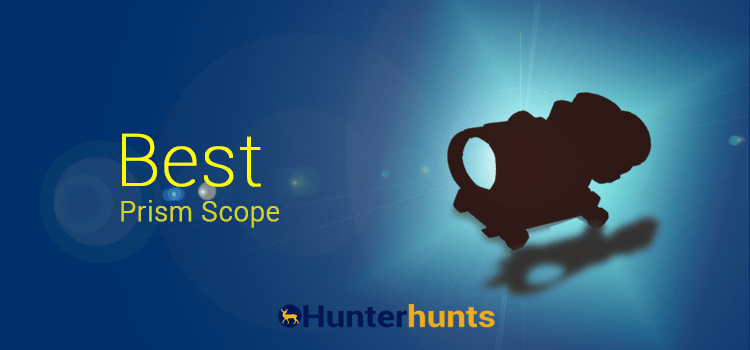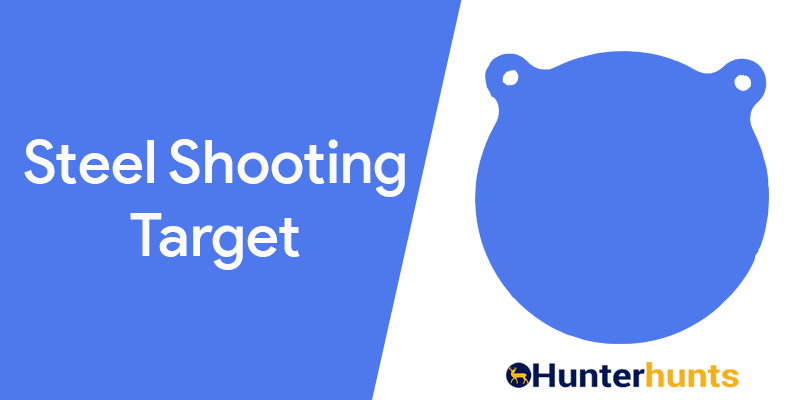Chasing or keeping an eye on deer or buck for a long time sounds like the most difficult task ever. Hopefully, a good pair of binoculars make this task painless. The various zoom levels allow you to keep track and give a detailed view of a game which you cannot do with the naked eye. More hunters tend towards buying hunting binoculars.

According to a report by GlobeNewswire, the binoculars market is estimated to grow by $123.44 million during 2020-2024. I know you are also one among them, not sure which hunting binocular is suitable for you. Expectantly, In this best hunting binocular buying guide, I will be covering all the necessary details by cutting the corners.
My hunting experience taught me the value of field glasses. I always questioned myself, what makes the binoculars so fine? I began my research and came to know a lot of technical details about the binocular mechanism, which I will share with you. Also, I will be explaining what you should see in a hunting binocular before buying it.
Related Post:- Best Hunting Binoculars Under $300
Related Post:- Best Bino Harness
What Is A Binocular?
It is more like two similar telescopes, one for each eye in a single frame which delivers a 3D image of the objects. This optical device produces a good depth of view aligned in the same direction, allowing the user to see distant objects using both of their eyes.
Types Of Hunting Binocular
1. Porro Prism Binocular:-
This traditional design of binoculars was first developed in the 19th century by Ignazio Porro and is still in use. However, it is heavier and larger but delivers great views in low light.
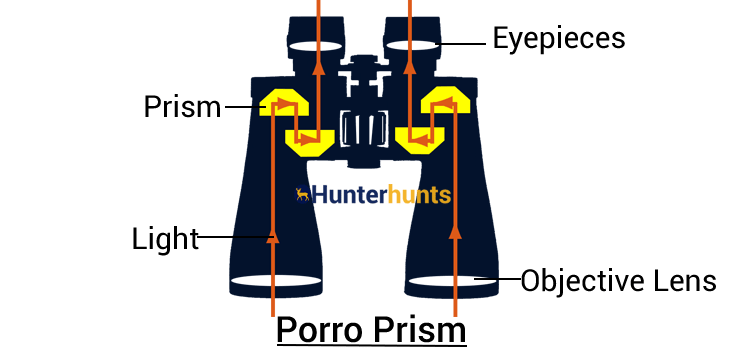
You can identify the Porro prism binocular with its shape and construction. It has the eyepieces offset from the objective lens that is larger. It usually features an individual focusing system which means each eyepiece focuses independently. In addition, it generally consists of 2 prisms that rotate the image in a zigzag through an optical path to the eyepieces.
2. Roof Prism Binocular:-
These are the modern and advanced forms of binoculars with a more compact and quality design. It may seem easy construction but it takes a lot of effort to manufacture a roof prism binocular as compared to a Porro prism. It has a complicated design inside to deliver a higher quality image and less light loss.

However, the wrong placement of prisms may lead to a bad image quality which is why these are more expensive and need expertise in manufacturing. Nowadays people prefer roof prism binoculars over Porro prism as these are compact in design and deliver a quality field of view in low light conditions.
What To See In A Hunting Binocular Before Buying?
Magnification:-
Magnification is the zoom capacity of a binocular. The higher the magnification, the lower the field of view, and vice-versa. For example, if you see a deer from 400 yards with 8x magnification then it will appear at 50 yards, which is 8 times closer.

Usually, for hunting and birdwatching, the ideal magnification is 10x because you need more zoom from a long distance. However, if you make a slight movement of the hand at 10x it will multiply and make the movement 10 times more. So if you are experienced and have already used a binocular then 10x is great for you. For beginners, I will recommend an 8x binocular.
Field Of View:-
This is the area that is visible to you without moving your binoculars. It is measured as the width in feet of the image at 1000 yards. Usually, most high-quality binoculars have a field of view between 300 and 375 feet at 1,000 yards.
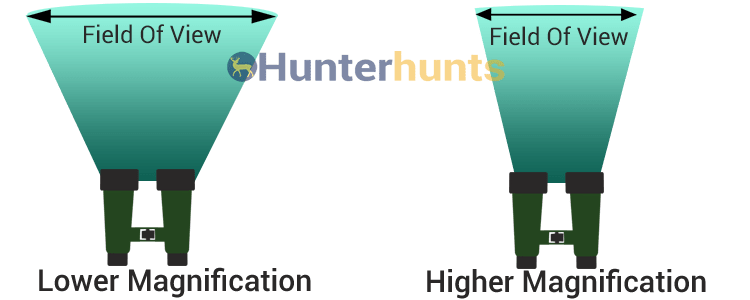
Objective Lens:-
These are the front lenses of a binocular that catch light rays from the distant object and make a focused image a short distance behind the lens. The bigger the objective lens allows more light-gathering capacity and greater size of the field of view.

The diameter of this lens is usually defined in millimeters (mm) and denoted with magnification i.e.10x42mm. Due to the appropriate angle of view, a 42mm diameter objective lens is excellent for hunting. While for low-light conditions, 50mm is a great option.
Eyecups:-
Its main purpose is to set your eyes at the correct distance behind the ocular lens to achieve a full field of view. There are three types of eyecups:
- Fixed Eyecups:- This is basic and very problematic for those who wear eyeglasses as you cannot adjust them.

- Two-position Eyecups:- It features two positions of adjustment, one for eyeglass wearers and the other for non-eyeglass wearers. They are better than fixed eyecups but still do not work well for the people who wear glasses. It is made for low-light use so that all light that comes from the side is blocked.

- Multiple Position Eyecups:- They are the most comfortable and advanced binoculars. These eyecups have at least 3 positions and cover all the groups of users. However, these are more expensive but worth paying.

Eye Relief:-
It is the distance from the outer surface of the eyepiece lens to the position where the exit pupil is formed. The recommended eye relief for hunting binoculars is between 12mm to 18mm to obtain the whole field of view without vignetting.

Exit Pupil:-
This is a white circle in the center of each eyepiece. It is important because without this virtual aperture, the light rays cannot pass through and exit the system, and enter your eyes. The human eye pupil dilates max up to 7mm in the dark and 2mm during the day. To know in detail about exit pupils click here.
Exit pupil = The effective diameter of the objective lens ÷ Magnification
Hanse, With 8×42 binoculars, the formula is 42 ÷ 8 = 5.3 mm.
Lens Coating:-
The coating on a binocular lens is applied to reduce the light reflection at the glass surface and pass more light through the lens. There are many types of lens coating applied:-
- Coated:- It is a magnesium fluoride coating on one or more lens surfaces to reduce the light reflection.
- Fully coated:- It features at least one thin anti-reflective coating on both sides of the objective lens system, both sides of the ocular lens system, and the long side of the prism.
- Multi-coated:- In this, multiple layers of coatings are applied to one or more of the lens surfaces.
- Fully multi-coated:- These are typically high-end optics with multiple coatings on all lens surfaces. This is best for hunting, resulting in light transmission of 90-95% for bright, sharp, and contrast images.
- Phase correction coating:- Most roof prism binocular designs have phase coating applied to one surface of the shorter light path half of the prism. Ultimately, it increases color fidelity, no colors are reinforced or canceled and gives a more accurate color reproduction.
Prism Glass Material:-
The binocular prisms are usually manufactured with Bak4 and Bk7 glass. Bak4 is Barium Crown which is a high-density glass to works well even in low light and is more expensive than Bk7. While Bk7 is a common crown glass prism that is found in inexpensive binoculars which may affect the exit pupil and produce an image with blurred edges. So for a quality image, get a Bak4 prism binocular.
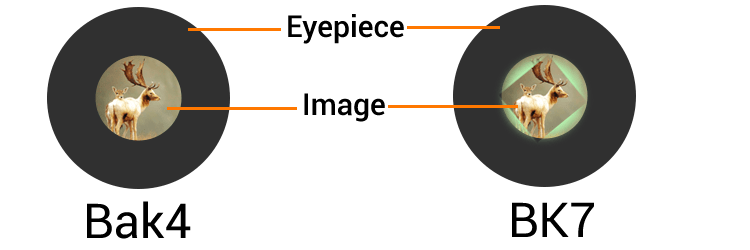
Focus System:-
Normally a binocular comes with either a center focus with diopter adjustment or an individual focus system. Today, most binoculars are made with a center focus dial which is easy to adjust and more ergonomic than individual focus. On the other hand, the individual focus has diopter adjusters on both sides of eyepieces which is more complicated to adjust.
Durability:-

- Waterproof & Fog Proof:- To make a binocular waterproof, fogproof, and suitable for different climate conditions, an O-ring seal and nitrogen or Argon purging are a must inside the chassis.
- Shockproof:- The chassis material plays a great role in making binoculars shockproof. The best you can buy is aluminum or magnesium body binoculars with rubber armor coating which is a great combination.
- Warranty:- Various brands provide different years of the warranty period, while some brands like Vortex and Nikon give a lifetime warranty. So it is a recommendation to buy a binocular brand with a long warranty period.
Size & Weight:-
Here I will suggest the roof prism binoculars as they are compact in size and weigh less than the Porro prism. The ideal weight of a binocular for hunting is 1.5 lb or even the lighter for all-day carry without any discomfort.
Accessories:-
Any accessory like a harness, tripod, mount, and carry bag sounds a fair deal if your binoculars are delivered with them. A harness and carry bag come with most binoculars, however, there are very few that deliver with a tripod or tripod mount. If not, you must get one. No matter what type of nut you use, the standard mounting size is 1/4-20 for any binocular.
Frequently Ask questions:-
1. Which binoculars are good for hunting?
Usually, an 8×42 is good for hunting as it delivers a steadier image, larger eye relief for those who wear glasses, and makes it easy to find your target. Also, to know more, check out this post about best-hunting binoculars under $300.
2. Which is better, 8×42 or 10×42 binoculars?
Both 8×42 and 10×42 binoculars are great depending on your needs. If you want a more detailed view of the object farther away, then 10×42 binoculars are great. On the other hand, 8×42 binoculars work excellently at finding targets quickly, delivering more stability, and usually are lower in price than 10×42 binoculars.
3. What are the best deer hunting binoculars?
I will recommend you the Vortex Optics Crossfire 8×42 for deer hunting. It has 8x magnification which is a good level for scanning for deer, and the 42 mm objective lens gives a field of view of 393 feet at 1,000 yards, which makes finding the deer even easier.
4. Are 10×50 binoculars good for hunting?
Yes, you can use a 10×50 binocular for hunting. The larger objective lens means more light transmission. However, there are other factors included like glass quality and coatings to deliver quality images and ensure optimum light transmission. So be brand-specific if you want a 10×50 binocular. Also, 10×50 binoculars are more bulky, large in size, and expensive too.
5. What are the best binoculars for long-distance viewing?
To view long-distance objects in more detail, you need a high-magnification binocular with larger objective lenses. I will recommend a 12×50 binocular. However if you aim to gaze at stars and other astronomical activities, you may check Celestron 25×100 SkyMaster or Vortex Kaibab HD 20x56mm Binoculars.

 T-Shirts
T-Shirts Long Sleeves
Long Sleeves Hoodies
Hoodies Sweatshirts
Sweatshirts

 Baby Bodysuits
Baby Bodysuits
 Cap
Cap





